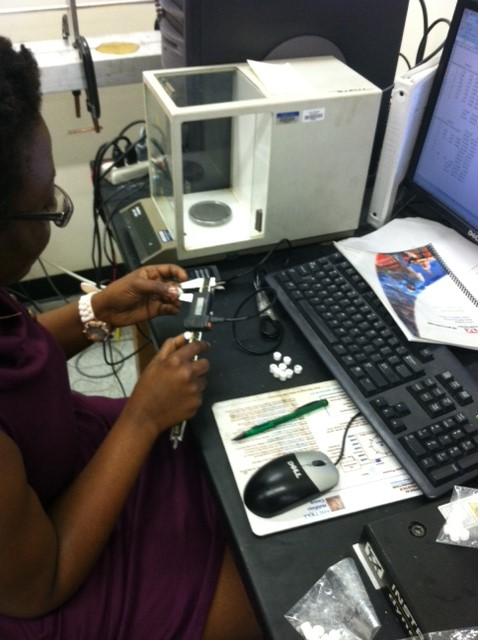Composite Materials lab
Jason Rann and Charisse Nelson
We are working in Professor Gupta’s Composite Materials lab, which focuses on the design and testing of composite materials ranging from new specimens of magnesium alloy to specimens with glass microballoons. Jason is studying a new composite of magnesium, AZ91. He has started by testing several control specimens (Ferrite, Aluminum, and non-treated AZ91) for a Vickers Hardness value. Next, he will heat treat the AZ91, using the T6 and T4 procedure, to document any changes in performance in addition to comparing to the control specimens.This experiment will enable performance comparison of this lower density composite vis-à-vis steel to identify situations where it can serve as a steel substitute and offer weight savings, e.g., offering fuel efficiency in automotive and aerospace applications. Charisse is creating and testing micro and nano composites of different densities and compositions.
By combining materials with different properties, new composite materials with useful properties are created. Such composite materials can yield cost reduction, weight saving, and increased durability. Charisse is creating syntactic foams that are made up of varying percentages of microballons, which are tiny, hallow, glass spheres, that when mixed with epoxy, and TETA, a hardener, undergo changes which cause the new material formed to be both sturdy and lightweight. These properties are beneficial for the Navy in engineering new aquatic vehicles.
After making several different composite samples Charisse will test them to see under what conditions they fail and their failure characteristics. Jason will set up a simple hardness tester to test several different materials with his engineering and robotics classes. The students will be challenged with an open ended design situation, where they will need to select a building material and defend their selection based on hardness test results.
Through this activity, students will gain an engineering perspective to material comparison, practice divergent thinking, and learn to work in small groups.
